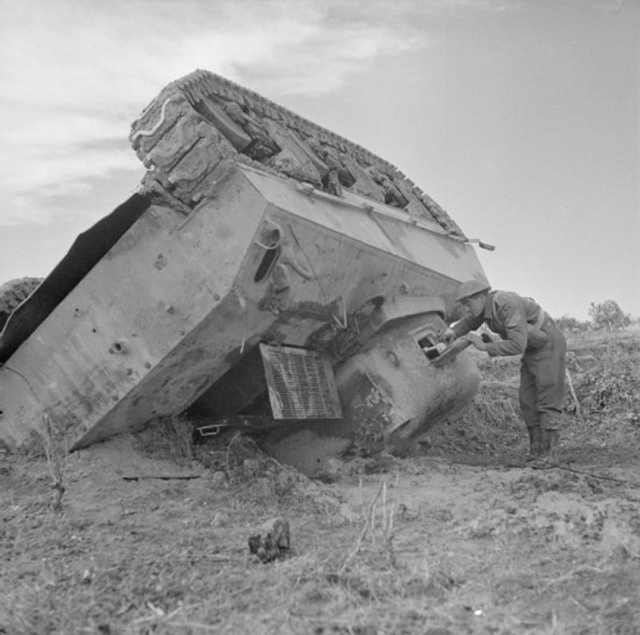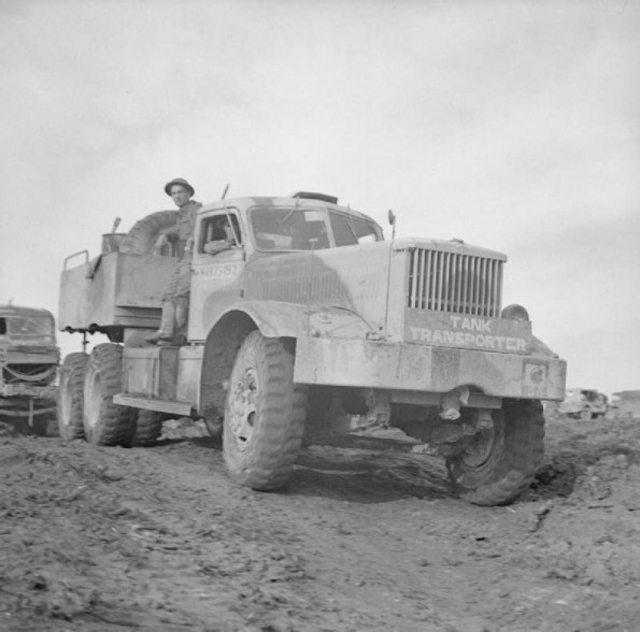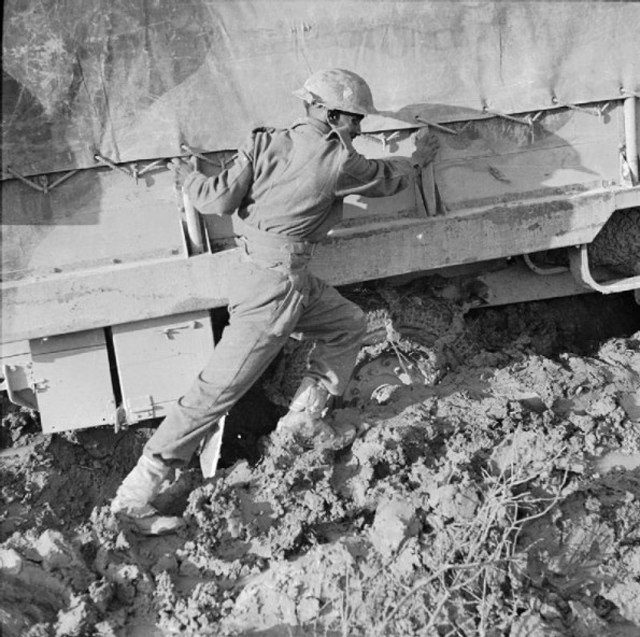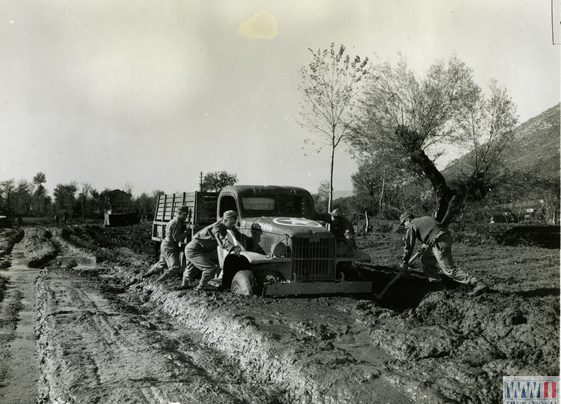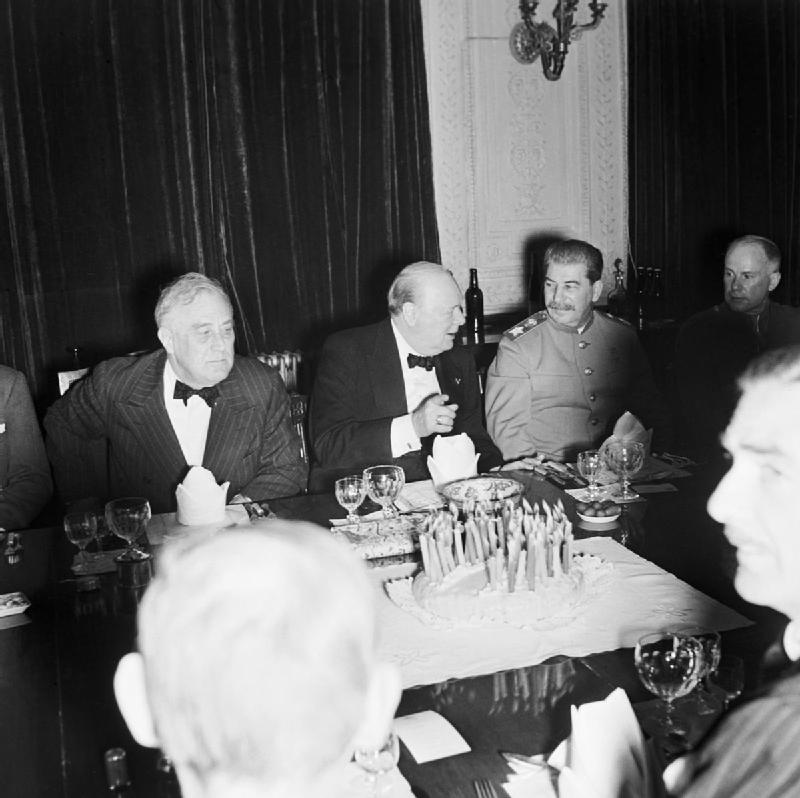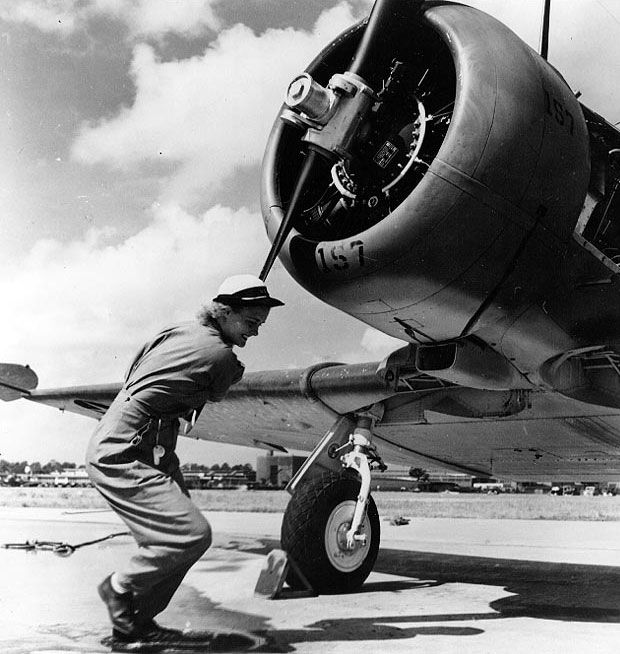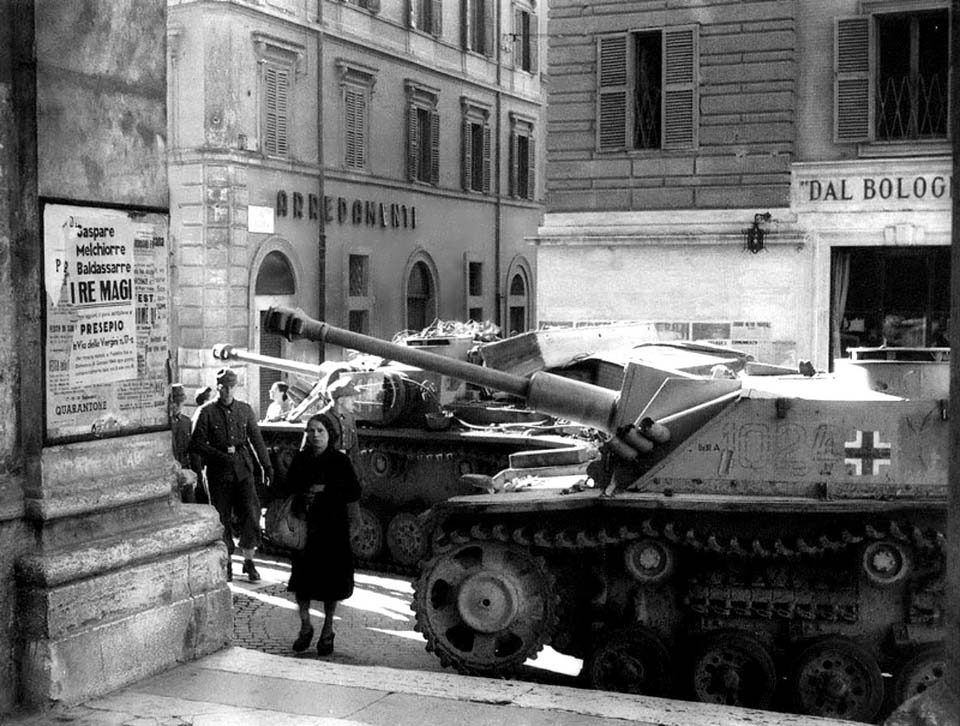Air Operations, Bismarcks
V Bomber Command B-24s attack the Cape Gloucester airfield on New Britain while B-25s attack targets on the New Britain coast.
[Air Operations, CBI
BURMA- During the night, RAF Wellingtons attack targets in Rangoon.
- 8 14 Air Force P-40s strafe boats near Ansiang.
- 6 P-40 fighter-bombers attack fuel and ammunition dumps at Luchiangpa.
- P-40s air-drop supplies to Chinese Army forces encircled at Changte.
Air Operations, Europe
RAF BOMBER COMMANDEvening Ops:
- No. 192 Squadron, flying from Foulsham, inaugurates No. 100 (Bomber Support) Group's operations by dispatching 4 Wellingtons on radio-countermeasures (RCM) flights.
- There are no losses.
- 4 Mosquitos are sent to Essen, 29 Stirlings and 15 Wellingtons lay mines off the French coast and there are 7 OTU sorties.
GERMANY:
- Although 352 B-17s and 29 B-24s are dispatched to Solingen to attack aircraft-industry targets, all the B-24s and all the 1st Bomb Division B-17s but 1 turn back because of extremely high cloudiness. In the end, 78 3rd Bomb Division B-17s, the 1 1st Bomb Division B-17, and 1 pathfinder B-17 attack the briefed primary with 224 tons of bombs between 1155 and noon.
- 3 B-17s are lost, 3 B-17s lost in operational accidents, 9 B-17s damaged; 11 crewmen killed, 20 wounded, 23 missing
- The VIII Fighter Command dispatches 327 P-47s and 20 P-38d to escort and support the bomber force, but only 1 victory is awarded to a 78th Fighter Group P-47 which downs an FW-190 near Eupen, Belgium at 1235 hours.
- 1 P-38 and 5 P-47s and their pilots are lost
AUSTRIA:
- 15th Air Force B-24s attack the Klagenfurt Airdrome.
- 15th Air Force B-17s attack the submarine base at Marseille.
- Although severely hampered by overcast conditions, 15th Air Force B-24s attack Fiume.
- 15th Air Force B-26s attack Montalto di Castro, a rail bridge at Monte Molino, and targets around Bastia and Torgiano.
- NATAF aircraft mounting numerous sorties against tactical targets in the German Army battle line provide a US Army division with decisive assistance in turning back a German Army counterattack.
Air Operations, Marshalls
18 VII Bomber Command B-24s sent from Nanomea to attack Maloelap Atoll abort in the face of bad weather, but 2 from that flight and 10 others based at Canton Island are able to complete the mission.
[Air Operations, New Guinea
V Bomber Command B-24s attack Alexishafen while B-25s attack Kalasa and motor vehicles near Waroe.
[Air Operations, Solomons
- 17 42nd Medium Bomb Group B-25s attack Malai in the Shortland Islands.
- Several US Navy PVs attack Mawareka.
- AirSols fighters attack numerous targets on Bougainville, Choiseul, and in the Shortlands
Allied Planning
The Teheran Conference ends. In response to Stalin's pressing requests, absolute priority is given to OVERLORD, the invasion of northern France, and ANVIL, the landing in southern France. Stalin promises that Russian will join the struggle against the Japanese after they have beaten the Germans. From Teheran Roosevelt and Churchill go back to Cairo, where their advisers pick up the threads of the Cairo Conference.
[Eastern Front
The Soviets pull out of Korosten in their second significant setback in this sector. The Russians close to within 11 km of Zhlobin.
SOUTHERN SECTORBelieving the German counterattack to have ended for the duration of the autumn muddy period, the 1st Ukrainian is taken by surprose when the XLVIII Panzer Corps unleashes another attack in the Zhitomir area. The LIX Corps also attacks at Korosten and after a bitter battle recaptures the town from the 60th Army.
THE OSTHEERDuring November the Germans committed 3 panzer divisions, 2 SS panzer grenadier divisions, 2 infantry divisions and 1 security division to the front line. One panzer, 1 mountain and 2 infantry divisions have left or were destroyed, leaving the Ostheer with 24 panzer, 10 panzer grenadier and 155 infantry divisions.
THE OPPOSING FORCESFrom Norway to the Crimea, the Germans have 2,850,000 soldiers. Dietl's 20th Army in Norway has 176,000 ment, approximately 40,000 of which are combat infantry, leaving the main line armies with around 2,650,000. Actual combat infantry in the line are becoming a rare breed as losses mount and replacements become increasingly scarce.
Army Group North, with 44 infantry divisins, have a battel strength of only 140,000 combat infantry, 100 operational panzers and assault guns and 2,400 arty pieces. It faces Leningrad, Volkhov and Northwest Fronts with 355,000 combat troops in their rifle divisions, 650 tanks and Su's and 3,700 arty pieces.
Army Group Center has 46 infantry divisions but disposes of only 147,000 combat infantry, 216 panzers and assault guns and 2,600 arty pieces. Facing it are the Belorussian, West and 1st and 2nd Baltic Fronts with 650,000 combat soldiers, 3,000 tanks and Su's and 6,720 arty pieces.
Army Group South, the most heavily committe of all the German army groups, deploys 44 infantry divisions with 140,000 combat infantry, 270 panzers and assault guns and 2,200 arty pieces while Army Group A has 17 infantry divisions with 54,000 combat soldiers, 100 tanks and assault guns and 800 arty pieces.
Attacking these armies are the 1st, 2nd, 3rd and 4th Ukrainian Fronts and the North Caucasus Front. Combined, the rifle formations of these fronts total 899,000 combat infantry (616,000 facing Army Group South), 4,250 tanks and Su's and 9,300 arty pieces. It is apparent from these figures that the Ostheer is massively outnumbered. The average German infantry division at the front has a combat strength of just under 3,200 infantry.
[Italy
In the British 8th Army area, the V Corps finishes clearing the first ridge beyond the Sangro. The 4th Armored Brigade and the 78th Division push toward the coast taking Fossacesia. The Indian 8th Division, moving northwest along the ridge, reaches the heights overlooking Castelfrentano. The the west, the New Zealanders, having crossed the Sangro with difficulty, join their bridgehead with that of the corps.
In preparation for the start of Operation RAINCOAT, the attack of the enemy positions on Monte Camino, units of the 5th Army begin a series of diversionary attacks against San Pietro and lower reaches of the Garigliano to deceive the Germans. In the VI Corps' 45th Division sector, the 1st Battalion of the 179th Infantry continues fruitless attempts to clear La Bandita. On Monte Pantano, the 1st Battalion of the 168th Infantry, 34th Division, retains its position against strong counterattacks and tries unsuccessfully to gain a second knob. Patrols of the 1st Battalion, 133rd Infantry, move into Castelnuovo while the 3rd Battalion advances to Monte la Rocca and elements of the 100th Battalion move onto Croce Hill.
[Pacific
- Gen Walter Krueger orders the setting up of a special force to invade the Arawe peninsula on the south coast of New Britain, on December 15, before the main landing in the Cape Gloucester area.
- The US submarine Gato (SS-212) sinks the Japanese army transport Columbia Maru (5618t) north of New Guinea.
United States Command
Gen Alexander Vandergrift is appointed to become commandant of the US Marine Corps with effect from January 1, 1944.
[United States, Planning
Lt-Gen Walter Krueger, commander of Alamo Force, orders the 112th Cavalry Regimental Combat Team (in reality a 1,500-man detachment from the Texas National Guard, without horses) to be prepared to land on Arawe, New Britain, by December 15.
[Images from November 30, 1943
|
|
|
|
|
|
|
|
